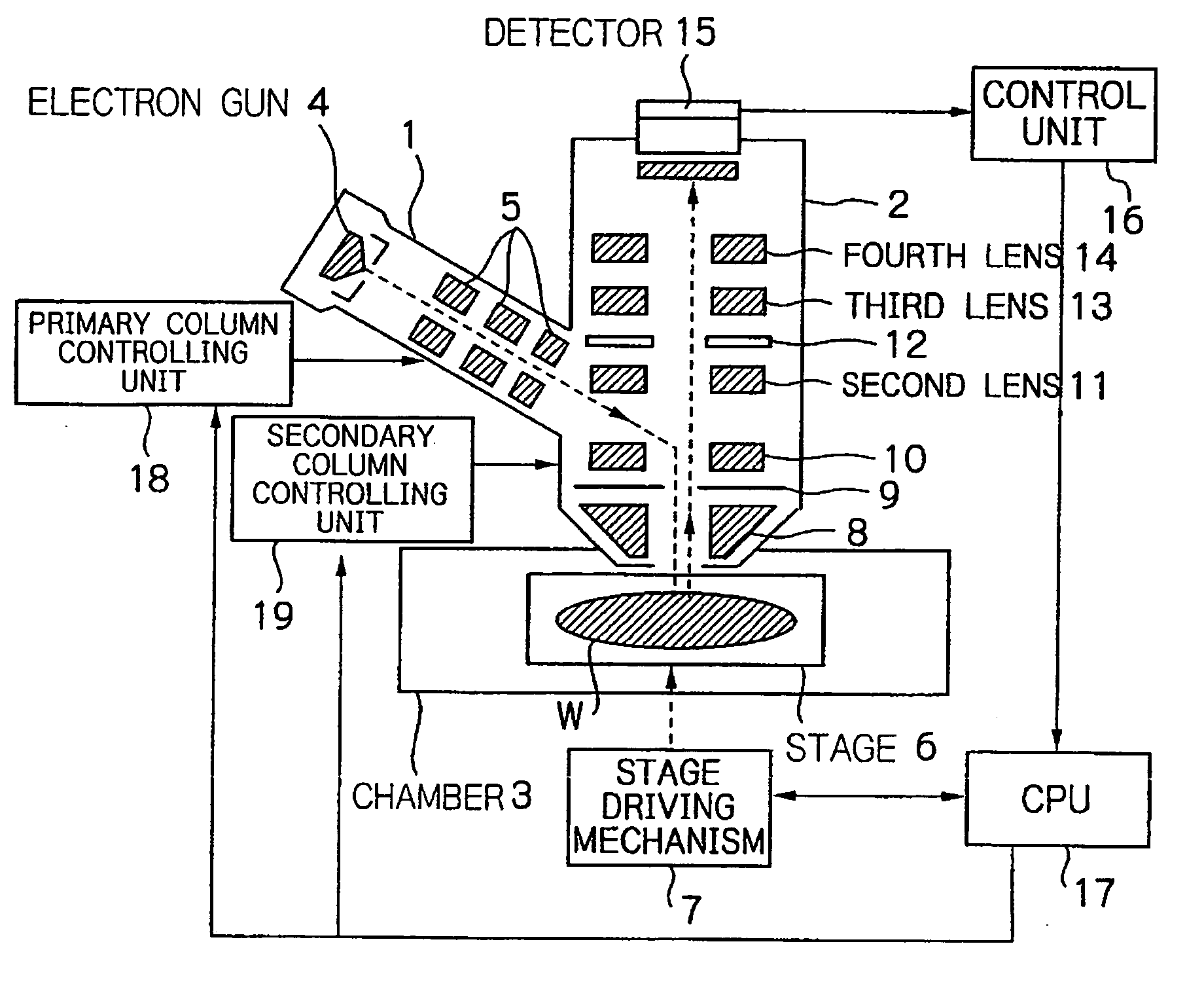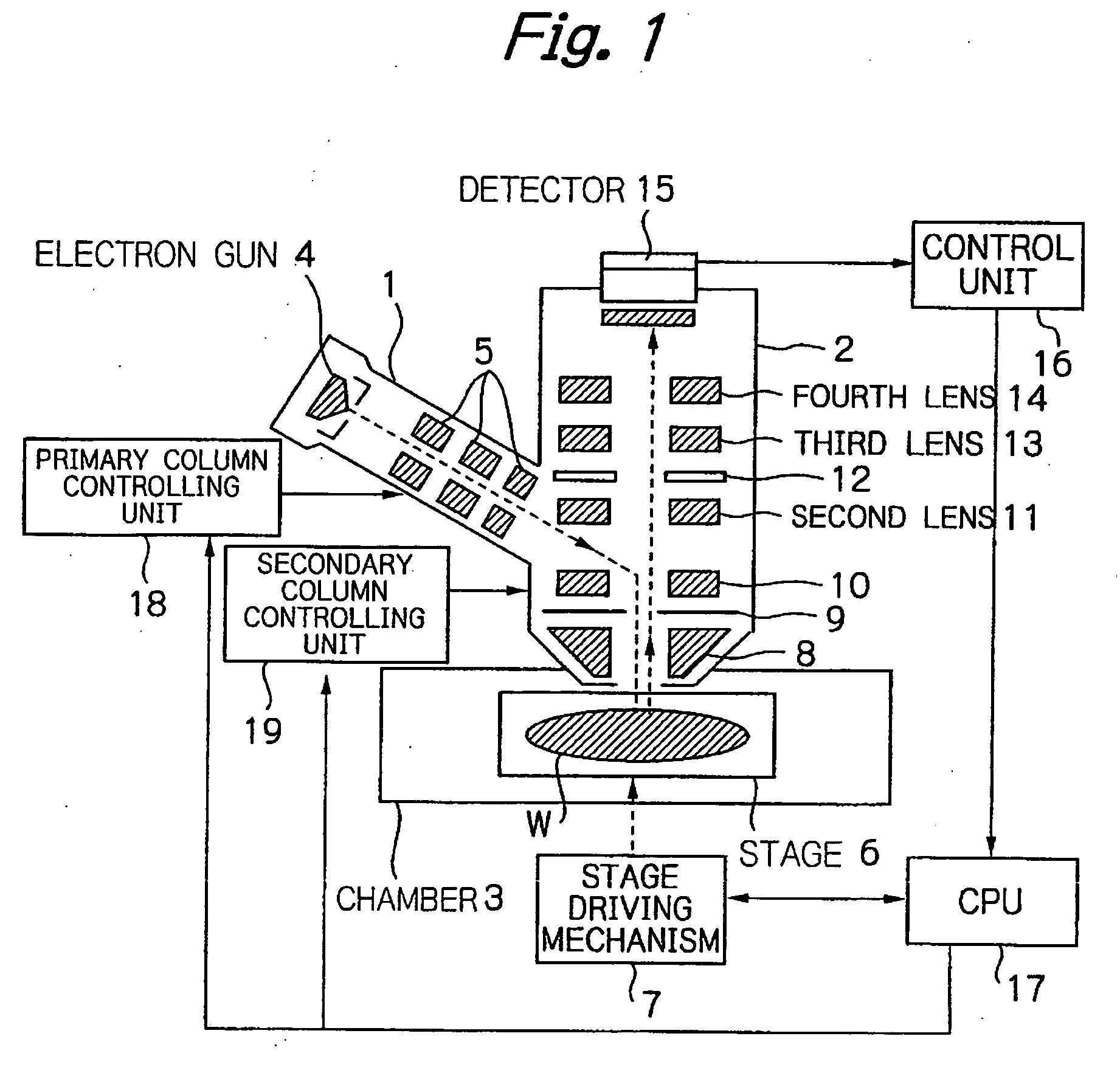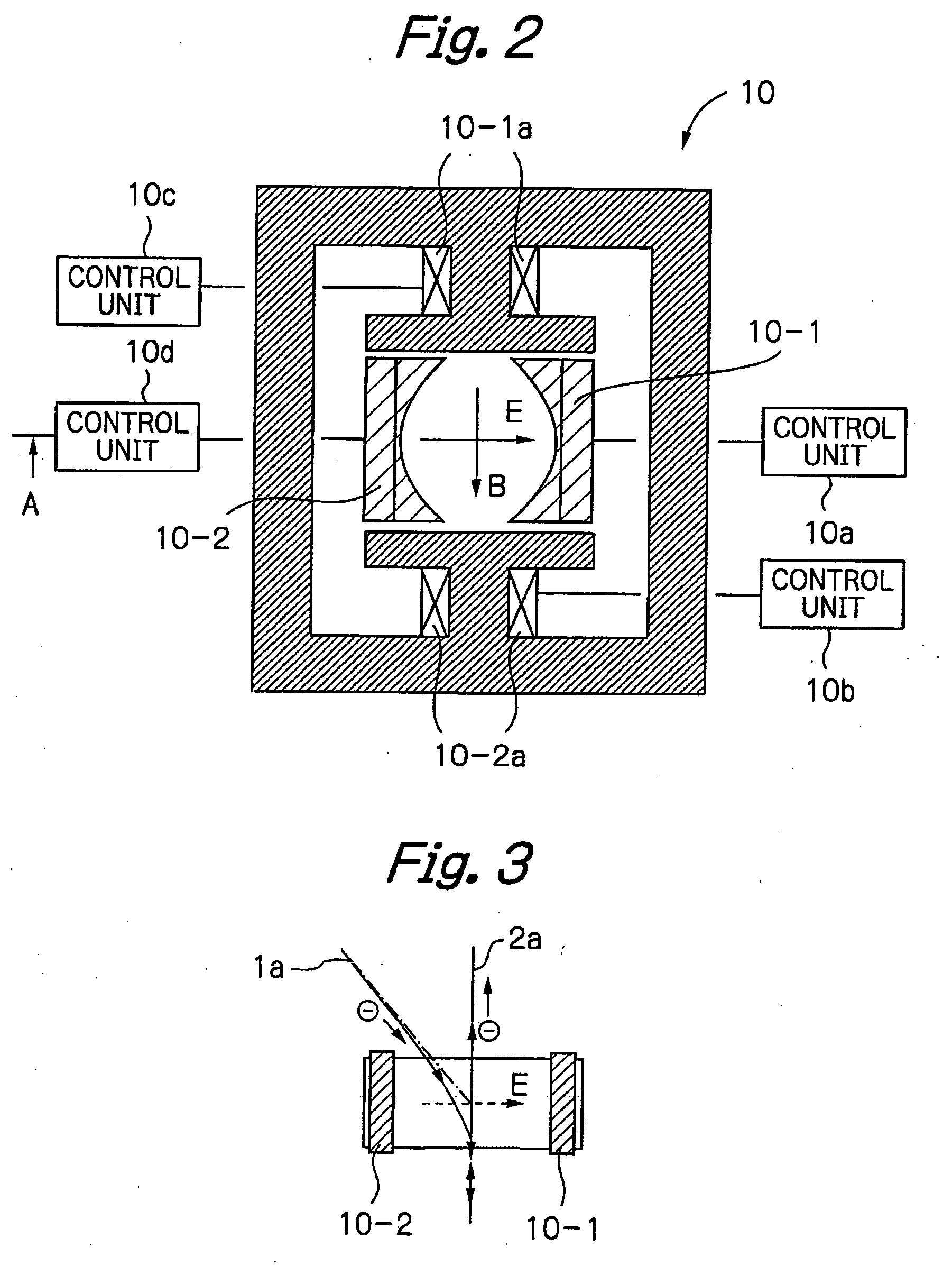Electron beam inspection system and inspection method and method of manufacturing devices using the system
a technology of electromagnetic beam and inspection system, applied in the field of inspection system, can solve the problems of optical defect inspection system limited in its resolution capability, optical defect inspection system cannot meet the resolution requirements, increase the number of inspections to be performed, etc., to achieve the effect of reducing chromatic aberration, minimizing off-axis aberration, and minimizing damage to samples
- Summary
- Abstract
- Description
- Claims
- Application Information
AI Technical Summary
Benefits of technology
Problems solved by technology
Method used
Image
Examples
Embodiment Construction
[0057] An image projection type electron beam inspection system according to an embodiment of the present invention will be described below specifically to clarify the relationship between the principal functions of the image projection system and the overall structure thereof.
[0058]FIG. 1 is a general view of the image projection type electron beam inspection system according to this embodiment. It should be noted, however, that part of the arrangement is omitted in the illustration.
[0059] In FIG. 1, the electron beam inspection system has a primary column 1, a secondary column 2, and a chamber 3. An electron gun 4 is provided in the primary column 1. A primary optical system 5 is disposed on the optical axis of an electron beam (primary beam) emitted from the electron gun 4. A stage 6 is installed in the chamber 3. A sample W is placed on the stage 6.
[0060] Meanwhile, the secondary column 2 contains a cathode lens 8, a numerical aperture 9, a Wien filter 10, a second lens 11, a...
PUM
 Login to View More
Login to View More Abstract
Description
Claims
Application Information
 Login to View More
Login to View More - R&D
- Intellectual Property
- Life Sciences
- Materials
- Tech Scout
- Unparalleled Data Quality
- Higher Quality Content
- 60% Fewer Hallucinations
Browse by: Latest US Patents, China's latest patents, Technical Efficacy Thesaurus, Application Domain, Technology Topic, Popular Technical Reports.
© 2025 PatSnap. All rights reserved.Legal|Privacy policy|Modern Slavery Act Transparency Statement|Sitemap|About US| Contact US: help@patsnap.com



